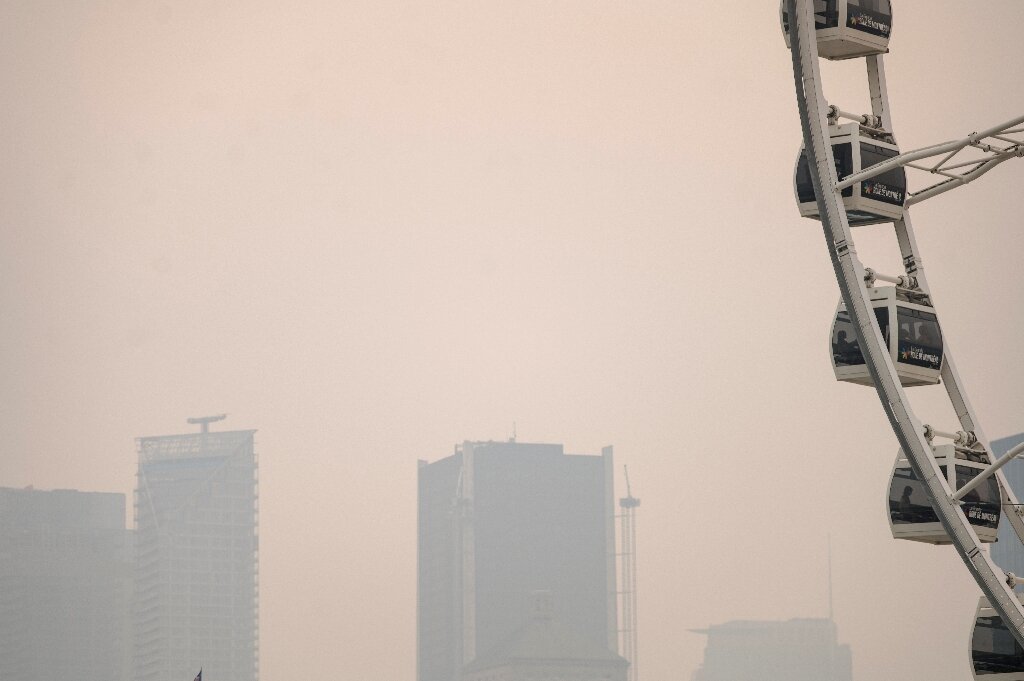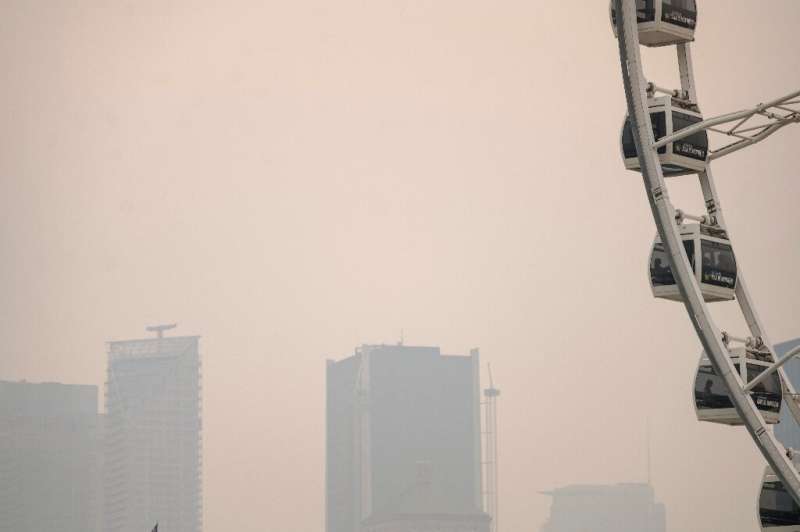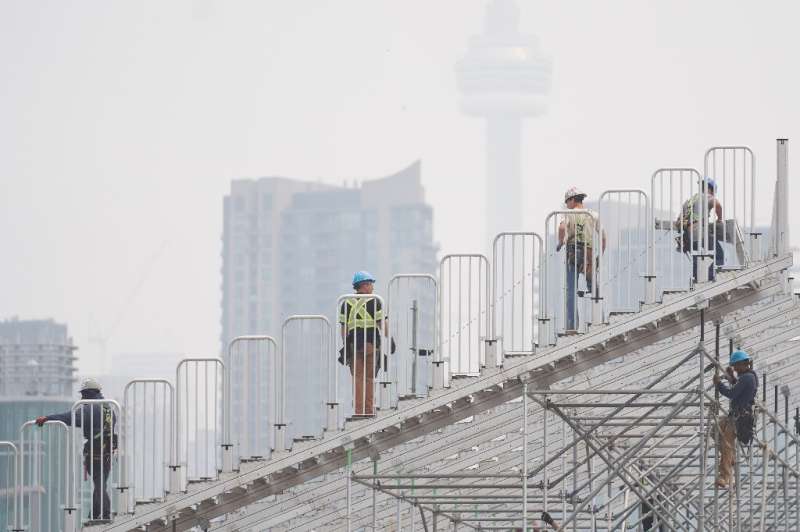

For many Canadian parents, the start of the summer holidays is turning into a headache, as thick wildfire smoke forces them to check air quality indices the same way they might normally check the weather forecast.
Major cities in Eastern Canada have faced heavy air pollution for several days, meaning vulnerable people—including children—have been advised to stay indoors to avoid the high concentrations of fine particles in the air.
Marion Helies, who heads a summer day camp in Montreal, told AFP the children in her care “are bouncing off the walls because we have been inside for several days.”
“Between the smoke and the rain, it’s a bit difficult for them,” she said, ahead of a 10-minute outing she organized despite the poor air quality.
Air quality warnings
For the second time in just days the city has been forced to close sports fields and outdoor pools due to the smoke, whose smell lingers in the streets despite the closest fires being more than 600 kilometers (370 miles) away.
Buildings are shrouded and the sun is hard to see.
According to authorities, the air quality index oscillates between “harmful” and “very harmful.”
After several days of being stuck at home, Marin Vicck, 14, finally went out: “The air quality is terrible, to the point where it’s difficult to walk around because of the smoke. You feel trapped,” he said.

Kedjar Boudjema, whose son is four, said he is discouraged by this succession of warnings over a few days. Phone in hand, he now consults his app on air quality every day.
“I’m worried about his health,” he said of his son. “But at the same time it’s complicated not to go out with him at all.”
Asthma fears
In the capital Ottawa, where visibility was also very poor, Janet Hamill opted to take her two grandchildren, ages 2 and 11, out for ice cream early, before the smoke became too much.
“I’m taking them out early in the day and will get them back home before it gets really bad. The smoke has been hard on them, and me, so we’ve been staying indoors mostly,” she said, adding that they’ve all suffered bad headaches.
There could be many more days like these throughout the summer—authorities have warned that Canada’s peak wildfire season is only just beginning, after an early start.

In a country where 10 percent of people suffer from asthma, many are worried about the long-term consequences of this exposure to toxic smoke. Calls to Asthma Canada, a nonprofit that funds education and research on the respiratory disease, have almost doubled since the fires started in early May.
People “especially want to know what they can do to protect themselves,” its president, Jeff Beach, told AFP.
Canada, which is warming faster than the rest of the planet due to its geographical location, has been confronted in recent years with extreme weather events whose intensity and frequency have been exacerbated by climate change.
© 2023 AFP
Citation:
For kids on summer break, Canada’s wildfire smoke hits hard (2023, June 30)
retrieved 30 June 2023
from https://phys.org/news/2023-06-kids-summer-canada-wildfire-hard.html
This document is subject to copyright. Apart from any fair dealing for the purpose of private study or research, no
part may be reproduced without the written permission. The content is provided for information purposes only.